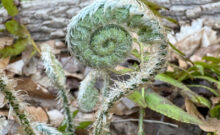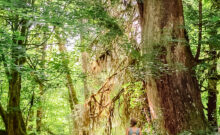Resilience, both on a personal and business level, helps us to create, build, and heal in ways never thought possible- giving us the ability to meet challenges that come our way. As a naive 19 year old, I had absolutely no idea how powerful resiliency really was. Internally, I was on an emotional roller coaster. At a particularly low point, I decided enough was enough and I committed to becoming physically stronger. This was the only place I knew to start so I could create the radical change I was desiring. I began running marathons, rock climbing, taking on almost any physical challenge that came my way. My life totally changed. I began to feel vibrant and more alive than ever. This worked well, for a while…until it didn’t.
The roller coaster of emotions was still there, lingering in the background. For a while, it was easy to ignore. However, it eventually transformed itself into anxiety. Physical resiliency could only get me so far. By the time I reached 30, I became aware of a new type of resilience that I needed to cultivate… inner resilience. This was actually far more challenging than developing physical resilience- but I knew the gains would be far greater.
How do we build resilience? The natural world is one of our greatest teachers on how to cultivate resilience. In nature, the most resilient systems are those that have the greatest diversity. The greater the diversity of life, the more connections there are within a system. As conditions change or become more challenging, the more diverse/connected a system is, the more resilient it is. The same applies to us. Going it alone (in business or personal life) or focusing on only one aspect of our well-being, does not set us up for resiliency. We are hardwired for connection. Intentional connection with other people, animals, and nature helps the development of inner and outer resiliency. In regards to our total wellbeing, our mind, body, and spirit needs to be considered elements of connection. If our spirit isn’t tended to, it can negatively impact both our mind and body. For instance, if our immune system isn’t functioning well, perhaps we should check in with our digestive system. It’s all about connections.
Nature gives us another great example of resilience- consider land that has been drastically disturbed, as with clear cutting. If given enough time, the land will regenerate through resources available. Sun, water, and first successional species pave the way for the future. Many of these plants are expert at extracting minerals from the soil; when the leaves die, nutrients are made available for future plant growth. How does this apply to us? We build resilience by noticing and recalling our own inner resources, those we have developed over the years. By taking stock of these inner resources and “bringing them to the surface”, we can more readily tap into these resources.
One of my favorite examples of resiliency that is modeled by nature is rest. In winter, deciduous trees go dormant, animals hibernate, the potential for new life in the form of seeds from annuals wait patiently for spring. We must rest- give our bodies enough nightly rest, rest our mind through meditation practices, and take a break from the busyness of the world. Doing these simple acts can be tremendously transformative. Rest gives us the capacity to creatively handle challenges, see situations differently, and effectively handle what comes our way.
At some level, we are all building resilience. It is a survival mechanism. What if we cultivated resilience as a way to thrive? Looking to nature, we can see how connection; tapping into resources; and rest can cultivate inner and outer resilience.






